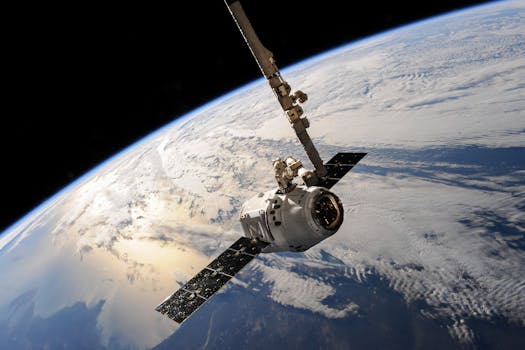
GEO Satellites: Introduction to a New Era of Global Connectivity
GEO satellites, or Geostationary Earth Orbit satellites, have been a cornerstone of modern telecommunications for decades. With the ability to provide continuous coverage of a specific region, GEO satellites have enabled global connectivity, facilitating communication, navigation, and remote sensing. The focus keyword GEO satellites is essential in understanding the significance of these satellites in today’s world. As we continue to rely on satellite technology for various applications, it’s crucial to explore the benefits, applications, and future of GEO satellites.
GEO satellites operate at an altitude of approximately 36,000 kilometers above the equator, allowing them to maintain a stationary position relative to a specific point on the Earth’s surface. This unique characteristic enables them to provide continuous coverage of a particular region, making them ideal for applications such as telecommunications, weather forecasting, and Earth observation. The technology behind GEO satellites has evolved significantly over the years, with advancements in areas like propulsion systems, power generation, and communication equipment.
Applications of GEO Satellites
GEO satellites have a wide range of applications, transforming the way we live, work, and communicate. One of the primary uses of GEO satellites is in telecommunications, where they provide voice, data, and video services to remote or underserved areas. They also play a critical role in navigation, providing location information and timing signals for various applications, including aviation, maritime, and land transportation. Additionally, GEO satellites are used for weather forecasting, enabling the collection of data on atmospheric conditions, ocean currents, and other environmental factors.
Another significant application of GEO satellites is in Earth observation, where they provide valuable data on the planet’s climate, geography, and natural resources. This information is essential for monitoring climate change, managing natural resources, and predicting natural disasters. Furthermore, GEO satellites have been used for scientific research, including the study of the Earth’s magnetic field, the atmosphere, and the universe. The versatility of GEO satellites has made them an indispensable tool for various industries, including telecommunications, navigation, weather forecasting, and Earth observation.
Benefits of GEO Satellites
The benefits of GEO satellites are numerous, with some of the most significant advantages including global coverage, reliability, and cost-effectiveness. GEO satellites can provide continuous coverage of a specific region, ensuring that communication, navigation, and other services are always available. They are also highly reliable, with some satellites operating for over 20 years without interruption. The cost-effectiveness of GEO satellites is another significant benefit, as they can provide services to remote or underserved areas at a lower cost than traditional terrestrial infrastructure.
In addition to these benefits, GEO satellites have also enabled the development of new technologies and applications, such as satellite broadband, satellite-based navigation, and Earth observation. These advancements have transformed the way we live, work, and communicate, with GEO satellites playing a critical role in enabling global connectivity. As the demand for satellite-based services continues to grow, the importance of GEO satellites will only continue to increase.
Future of GEO Satellites
The future of GEO satellites is exciting, with advancements in technology and new applications on the horizon. One of the most significant developments is the introduction of High-Throughput Satellites (HTS), which offer faster data speeds and greater capacity than traditional GEO satellites. HTS will enable the provision of high-speed broadband services, including video streaming, online gaming, and cloud computing.
Another area of development is the use of GEO satellites for 5G networks, where they will play a critical role in providing connectivity to remote or underserved areas. The integration of GEO satellites with 5G networks will enable the provision of high-speed, low-latency services, including enhanced mobile broadband, ultra-high-definition video streaming, and massive machine-type communications. The future of GEO satellites is also expected to involve the development of new propulsion systems, power generation, and communication equipment, enabling the creation of more efficient, sustainable, and cost-effective satellites.